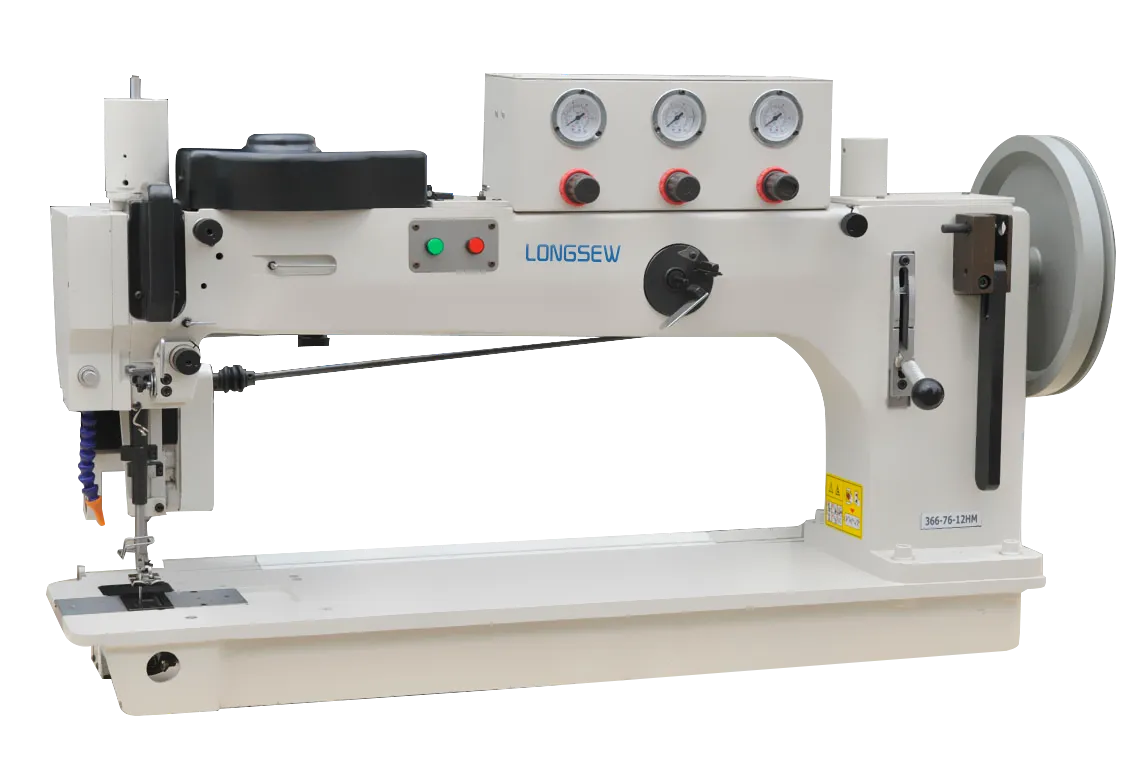single needle lockstitch sewing machine
The Single Needle Lockstitch Sewing Machine An Overview
The single needle lockstitch sewing machine is a staple in both industrial and domestic sewing environments. Known for its reliability, versatility, and ease of use, this type of sewing machine has become a go-to choice for many sewing enthusiasts and professionals alike. In this article, we will delve into the mechanics, advantages, and applications of the single needle lockstitch sewing machine.
Mechanics of the Machine
At its core, the single needle lockstitch sewing machine operates on a relatively simple mechanism. It employs a single needle, which penetrates the fabric, creating a stitch by interlocking the upper thread with the lower thread. The upper thread is fed from a spool on top of the machine and threaded through a series of guides before passing through the needle, while the lower thread is fed from a bobbin located beneath the needle plate.
When the needle goes down, it carries the upper thread through the fabric, forming a loop. A hook mechanism grabs this loop and pulls it around the lower thread resting on the bobbin. This interlocking of the threads is what creates the lockstitch, which is known for its strength and durability. This mechanism is relatively easy to maintain, which contributes to the machine's popularity among both beginners and experienced sewers.
Advantages of the Single Needle Lockstitch Sewing Machine
One of the most significant advantages of the single needle lockstitch sewing machine is its stitch quality. The lockstitch is tight and secure, which minimizes the risk of unraveling. This makes it particularly suitable for sewing a variety of fabrics, from lightweights like silk to heavier materials like denim or canvas. The ability to adjust stitch length further enhances its versatility, allowing users to create everything from delicate hems to robust seams.
Another advantage is the machine's user-friendly nature. Most models feature straightforward controls, making it easy for beginners to grasp the basics of sewing. Additionally, the single needle design simplifies threading and maintenance tasks, further enhancing user experience.
single needle lockstitch sewing machine

Cost-effectiveness is another key benefit. Single needle lockstitch machines tend to be more affordable than their multi-needle counterparts, making them accessible for hobbyists and small businesses alike. Moreover, due to their widespread popularity, replacement parts and accessories are readily available, reducing maintenance costs over time.
Applications
The applications of single needle lockstitch sewing machines are vast. In the garment industry, they are extensively used for constructing garments, including shirts, trousers, and dresses. The lockstitch is ideal for creating clean seams that are both strong and aesthetically pleasing.
Beyond apparel, these machines are also applied in various sectors, including upholstery, quilting, and even leatherwork. Their versatility allows sewers to experiment with different materials and projects. For example, one can easily switch between sewing lightweight fabric for a summer dress and heavier upholstery material for a couch cover, adapting to the specific requirements of each project.
Moreover, the single needle lockstitch machine has evolved with technology. Many modern versions include features like automatic thread tension control, programmable stitch patterns, and even computerized controls that enhance functionality and broaden the range of tasks users can undertake.
Conclusion
The single needle lockstitch sewing machine remains an essential tool in the worlds of fashion, upholstery, and more. Its robust design, high-quality stitching capabilities, user-friendly nature, and affordability make it a favorite among both amateur and professional sewists. Whether you're sewing your first project or you're a seasoned tailor, investing in a single needle lockstitch machine can provide you with the versatility and reliability you need to bring your creative visions to life. As sewing continues to grow in popularity as a hobby and craft, this machine will undoubtedly remain a cornerstone of the sewing community for years to come.
-
Heavy Duty Leather Sewing Machine: A Must-Have for Professional LeatherworkNewsMay.28,2025
-
Leather Sewing Machine: Essential for High-Quality LeathercraftNewsMay.28,2025
-
Extra Heavy Duty Sewing Machine for Premium Leather ApplicationsNewsMay.28,2025
-
Walking Foot Cylinder Arm Sewing Machine: Precision and Power CombinedNewsMay.28,2025
-
Industrial Cylinder Arm Sewing Machine: Engineered for High-Performance StitchingNewsMay.28,2025
-
Cylinder Bed Sewing Machine: A Powerful Solution for Precision StitchingNewsMay.28,2025
-
Zigzag Sewing MachineNewsMay.12,2025





























